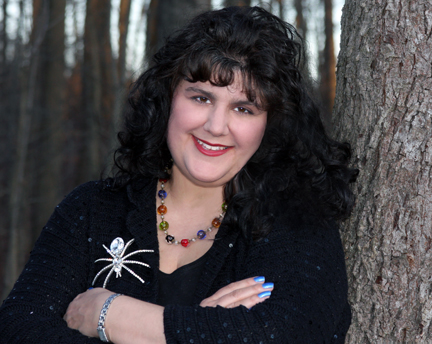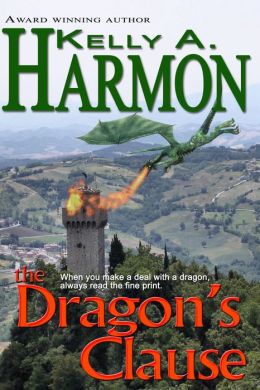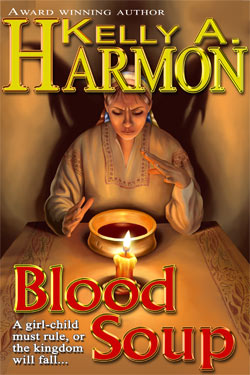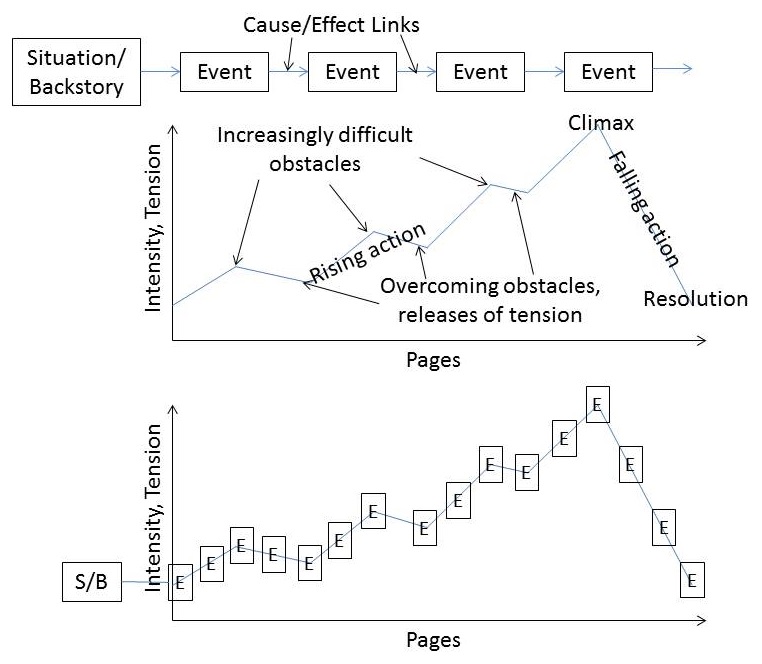 I’m pleased to welcome author Kelly A. Harmon to the world of Poseidon’s Scribe. Kelly writes epic fantasy, urban fantasy, and science fiction.
I’m pleased to welcome author Kelly A. Harmon to the world of Poseidon’s Scribe. Kelly writes epic fantasy, urban fantasy, and science fiction.
A former newspaper reporter, Kelly says she “used to write truthful, honest stories about authors and thespians, senators and statesmen, movie stars and murderers. Now she writes lies, which is infinitely more satisfying, but lacks the convenience of doorstep delivery, especially on rainy days.”
Among her many enjoyable stories are “The Dragon’s Clause” and “Blood Soup.”
 “The Dragon’s Clause:” For hundreds of years, the city-state of San Marino has paid tribute to the dragon living beneath their mountain city. But humans are forgetful, and no one alive has ever seen the dragon. Though a contract exists, the people feel they are just throwing their money away. Find out what happens when the city residents renege on their contract with the dragon.
“The Dragon’s Clause:” For hundreds of years, the city-state of San Marino has paid tribute to the dragon living beneath their mountain city. But humans are forgetful, and no one alive has ever seen the dragon. Though a contract exists, the people feel they are just throwing their money away. Find out what happens when the city residents renege on their contract with the dragon.
 “Blood Soup:” Danger awaits the Kingdom of Borgund if a woman fails to take the throne. When the pregnant Queen finally gives birth, the king faces a terrible choice. Will he choose wisely or doom the kingdom to ruin?
“Blood Soup:” Danger awaits the Kingdom of Borgund if a woman fails to take the throne. When the pregnant Queen finally gives birth, the king faces a terrible choice. Will he choose wisely or doom the kingdom to ruin?
I read and loved both these stories, and posted reviews here and here. And now for the interview:
Poseidon’s Scribe: When and why did you begin writing fiction?
Kelly A. Harmon: I’ve been writing all my life. Seriously. I don’t remember a time when I wasn’t writing a story.
As for the why of it: because I can’t not. I’ve taken little vacations from writing, but, like some crazy illness, I can’t get away from it. There’s actually a Latin phrase for this: Cacoethes Scribendi. The phrase comes from the Juvenal’s Satires, wherein he states, “Tenet insanabile multos scribendi cacoethes.” “The incurable desire for writing affects many.” My first Web site was called Cacoethes Scribendi.
P.S.: What are the easiest, and the most difficult, aspects of writing for you?
K.H.: It’s all easy…and it’s all hard. Some days are just easier than others. Writing is easier when I know where the story is going: words just seem to flow. The difficulties come when I want to write about something, but don’t have a clear picture in my mind. When that happens, I put the story away and work on something else until I have time to think about it.
P.S.: What inspired you to write “Blood Soup” and “The Dragon’s Clause?”
K.H.: “Blood Soup” is the product of the 3-day novel contest. I wanted to see if I could write a story in three days. The rules allowed you to plot the novel before you started, so I had a little cribsheet—a postcard actually—with a series of scenes I wanted to write. I got all the way to the last day, when you’re supposed to mail it off to the judges…and a thunderstorm rolled through the area and blacked out my power for over an hour. I was devastated! But it came back on before the deadline and I was able to submit. I submitted a finished novel, but it didn’t win one of the big-three prizes. However, “Blood Soup” did go on to win first place in the Fantasy Gazetteers contest and was published later than year by an unaffiliated publisher.
“The Dragon’s Clause” is one of my favorite short stories! I wrote it on spec for an anthology, and was tickled pink when it was accepted. It was clearly a case of, “I want to be published there…what can I write?”
P.S.: What is the audience you’re trying to reach in your stories?
K.H.: Honestly, I write for myself. I strive to write well, and I’m always looking to improve, but I’d write whether or not there was an audience. (See: Cacoethes Scribendi). However, I hope my novels appeal to anyone who enjoys escape. I’d like to entertain more than anything.
P.S.: What are your favorite genres to write in?
K.H.: Six months ago I would have said epic fantasy unequivocally. However, I’m starting to write some contemporary urban fantasy, and it’s a lot of fun. Look for a book or maybe two by the end of the year.
P.S.: In your opinion, why does the fantasy genre seem to have such staying power?
K.H.: I think there are a lot of reasons people like fantasy: most of the tropes are familiar—old English settings, for example, though a lot of really good fantasy breaks out of that mold—and people are comfortable with it. It’s easily relatable with a lot of magic and excitement tossed in. It’s definitely escapist.
P.S.: Every Friday, your blog features prompts for fiction writers; do you find you need a prompt to get going with a story?
K.H.: I find that I don’t need a prompt to write, but I sometimes like to use one. I have enough story ideas to write for a lifetime, but a prompt is very useful in sidetracking my brain to think in a different way. I might use a prompt or two to see where it might lead me in my current work in progress or to start a short story. I find prompts especially useful for creating short story plots.
P.S.: What is your current writing project?
K.H.: I’m busy, busy, busy! I’m in the process of getting all my previously published short stories back into print and electronic—including a collection or two which will contain some stories not yet published. I’m finalizing edits on a novel—which I’ve received an offer on. If I decide to sign the contract, you’ll see it in early 2015. I’m also working on the third book of a sexy urban fantasy. The first in the series is on the desk of an editor right now, and I’m working on edits of the 2nd.
P.S.: What advice can you offer to aspiring writers?
K.H.: Write every day. Don’t wait for inspiration. Listen to criticism, but be true to your voice.
Thank you very much, Kelly! The entire staff at Poseidon’s Scribe wishes you every success. My readers can find out more about Kelly A. Harmon at her website, on Facebook, and on Twitter. Her author site at Amazon.com is here.
Poseidon’s Scribe




